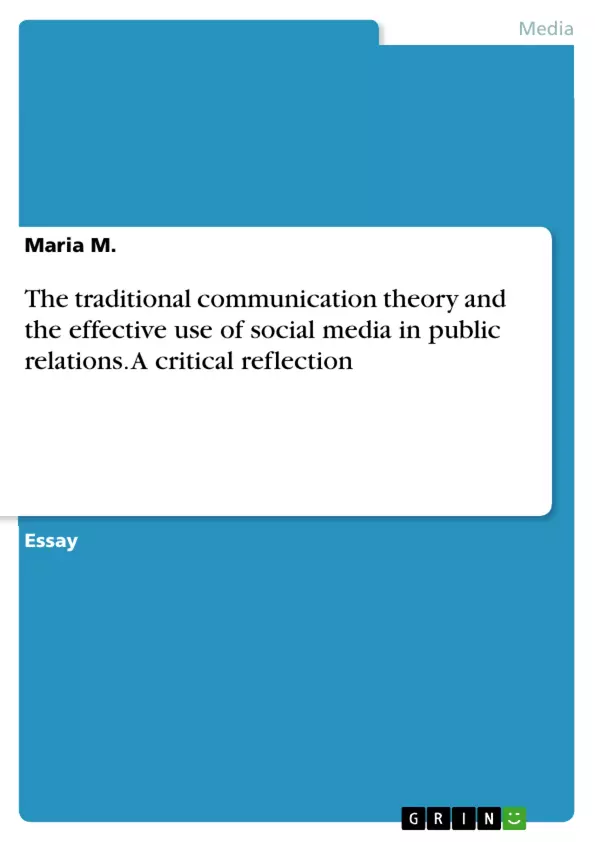This paper aims to address the question, whether an understanding of traditional communication theory can contribute to the effective use of social media or not. The question will be addressed by utilising relevant theoretical frameworks as well as examining current developments and dominant debates within PR practice.
In order to discuss this topic, it is first necessary to define what traditional communication theory is and what role it plays within PR practice. Thus, the assumption of PR to be an interdisciplinary study constituted of humanities, sociology and communication appears important. Whilst humanities studies focus on the viewpoint of rhetorical and discursive approaches and sociology studies understand communication in terms of systems process by adopting systems theory, communication studies address PR from different ‘mindsets’.
Human communication is explained with psychological concepts; persuasion is considered to be a goal of both mediated and direct communication; and mass communication focuses on media relations theories and media effects. Derived from this we can conclude that communication theory can be identified as an element of PR practice. Correspondingly. the use of social media is a technique of building media relations, and therefore a subject of mass communication. However, these considerations do not explain which part of communication theory can be identified as traditional.
Communication is inevitable in public relations (PR) practice, because it contributes to the building of good relationships between an organisation and its stakeholders with the desired outcome of “…earning understanding and support and influencing opinion and behavior”. PR practitioners manage relations to community, employees, consumer and other stakeholders by understanding and using communication concepts and strategies.
Recently, the communication practice of PR practitioners has been challenged by the heavy influence of the revolutionary character of the internet. In other words, they face the challenge of adapting their communication strategies at the same pace as the new technologies and tools are developing. Especially “the rise of social media” provided a rich debate ground for PR practitioners, PR theorists and academics of different disciplines.
Table of Contents
- Introduction
- Communication Theory and Public Relations
- Traditional Communication Theory
- Dominant Communication Theory
- Critical Communication Theory
- Social Media in Public Relations
- Conclusion
Objectives and Key Themes
This paper aims to examine the relevance of traditional communication theory for understanding the effective use of social media in public relations (PR) practice. It explores how traditional communication models can contribute to or hinder the development of effective social media strategies.
- The role of communication theory in public relations practice
- The evolution of communication theory from traditional to modern perspectives
- The relationship between public relations and the rise of social media
- The challenges and opportunities of social media in building relationships with stakeholders
- The effectiveness of social media in influencing public opinion and behavior
Chapter Summaries
- Introduction: The paper introduces the crucial role of communication in public relations (PR) practice, highlighting the challenges posed by the rapid evolution of the internet and social media. It emphasizes the need to assess whether traditional communication theory can be effectively applied in the context of social media.
- Communication Theory and Public Relations: This chapter examines the diverse perspectives on communication theory within the field of public relations. It explores the distinction between traditional, dominant, and critical communication theories, offering examples and critiques of each approach.
- Social Media in Public Relations: The chapter focuses on the impact of social media on public relations, exploring different perspectives on the term "social media" and its implications for relationship-building, perception management, and behavior change. It also analyzes the use of social media as a tool for persuasion.
Keywords
The key themes and concepts explored in this paper include communication theory, public relations, social media, relationship management, persuasion, social interaction, dominant models, traditional models, critical models, stakeholder engagement, and new media technologies.
- Quote paper
- Maria M. (Author), 2012, The traditional communication theory and the effective use of social media in public relations. A critical reflection, Munich, GRIN Verlag, https://www.grin.com/document/972394



